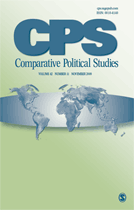Political Structures, Social Diversity, and Public Policy: Comparing Mandatory Education in Canada and the United States
- Jennifer Wallner jennifer.wallner{at}uottawa.ca
Abstract
Mandatory education systems form a central pillar of modern social policy sectors. For two of the countries in North America, the expansion of mass public schooling followed similar trajectories. Despite surface-level similarities, there are important differences in the two countries that require explanation. Without national intervention, the Canadian provinces have instituted similar policies fashioning a de facto national education policy framework. State and local education policy, however, demonstrates major variations that Washington has been unable to smooth out. These outcomes confound conventional institutional or societal approaches. This article calls first for a synthesis of macro-level institutional and societal factors. To unravel the sector-specific attributes, the interactive effects of meso-level policy choices must be assessed. By dividing a sector into its individual dimensions, these effects can be appreciated and coupled with the institutional and societal forces outlined above to account for the distinctive features of Canadian and American mandatory education.
- © 2011 SAGE Publications, Inc.



















